Think you’ve been there, done Europe? Reignite your wanderlust with these six inspiring ways to experience the Old World anew.
1. The South of France
The antithesis of a bucket list goes sort of like this for me: Rather than experiencing something once before crossing it off a list, my goal is to return incessantly to the south of France. Here’s why:
Lavender, roses and poppies
You may want to develop a green thumb after seeing rows upon rows of purple lavender with rose bushes at the end of each row. And the oh-so-French tissue-paper blossoms of poppies growing like weeds—but not like mine at home! (Seriously, weeds. French farmers may use herbicides to get rid of Papaver rheas—the Flanders Field poppy—but there are still banks of them along the roadways.)
Les Baux-de-Provence
One of the smallest hamlets in my travels, Les Baux-de-Provence has a population of 22 – down from the 3,000 who lived within the ramparts in the 13th century. Legend has it that the House of Baux was descended from Balthazar, one of the Three Wise Men who followed the star of Bethlehem, which is featured on its coat of arms. But with the death of the last member of the House of Baux in the 15th century, the castle was demolished and only partially rebuilt until King Louis XIII of France gave the lordship to the Grimaldi princes in appreciation of them driving the Spanish from Monaco in 1641. As the Marquis of Baux, Prince Albert of Monaco was given the keys to the city during his visit with his mother, the legendary Princess Grace, in 1982. He returned to the castle in July 2012 for a tribute to Princess Grace by Paris-Match magazine.
Roussillon
On the edge of a red cliff, Roussillon has more restaurants than I’ve ever seen in a village with a population of less than 1,300. It’s a visual feast, too. The buildings on its spiralling streets glow in every shade of ochre imaginable—yellow, red, brown purple, sienna and umber—found in the clay deposits surrounding the town. The surrounding quarries are said to be the world’s biggest vein of ochre, which, aside from the clarity of the light, was a major attraction for European painters. The natural pigment is the basis of the paints they used to create their masterpieces.
Van Gogh
I’ve enjoyed a pastis at the yellow café Vincent van Gogh made famous in Arles but, standing in the small barren cell in Saint-Paul de Mausole in the town of Saint-Rémy-de-Provence and looking out the barred window that was his view for the year he spent “resting” here sends shivers down my spine. Far from resting, van Gogh’s confinement to this private asylum (still in operation today) was his most prolific period. Some of his most famous works originated here: The Starry Night, Vase with Irises, Wheat Field with Cypresses. Yet none of his originals are here; only reproductions set up in the fields where he had often worked. Seeing the original scene, standing where he would have stood is, surprisingly, as moving as seeing the paintings themselves, now hanging in museums around the world.
Steak tartare in Cassis
Twice-ground top-quality filet mignon with egg, onion, capers, Worcestershire and olive oil served immediately with salt, pepper and parsley—and a glass of Cassis’s tangy white wine. While Provence may be synonymous with rosé—a sip of summer with every mouthful—Cassis is an aberration in the south of France, specializing as it does in white wine. Enjoying a glass or two with a platter of steak tartare in the seaside town of Cassis overlooking a world-class beach makes you feel like a silver-screen star.
Nîmes
Word has it that back in the ’50s, Hollywood legend Ava Gardner snuck through the kitchens of the prestigious Hôtel Imperator in historic Nîmes (the source of serge de Nîmes, shortened to denim) to meet her lover, Spanish bullfighter Dominguín. Would she have crept down the broad staircase or boldly descended in the art deco elevator to the lush marble-floored lobby? She had been introduced to bullfighting by author Ernest Hemingway, another frequent guest at the hotel, who modelled the bullfighter in The Sun Also Rises on Dominguín’s father. But the glow of Gardner’s star may have been dimmed by that of her lover’s in a town where bullfighters continue to be hailed as rock stars. Posters plaster the windows of shops and cafés, announcing the appearances of matadors at the Arena of Nîmes, built by the Romans in the first century AD and with a seating capacity of 16,300.
Marseille
Forget crime, the drug trade and the French Connection, the city is famous for bouillabaisse, a rich fish soup with a saffron tinge and garlicky rouille. Did the Ancient Greeks bring the recipe when they founded France’s oldest city, then called Massalia, in 600 BC, or did Venus make it to put her husband, Vulcan, to sleep while she partied with her lover, Mars? At Les Arcenaulx, a bookstore-restaurant in one of the oldest working buildings in Marseille, I find a Canadian connection: in the list of must-read books is the French translation of Three Day Road, Canadian Joseph Boyden’s first novel.
The light and the air
Watch the sun dance on the water. Breathe deeply and exhale. Yes, you can only be in the south of France. —Arlene Stacey
IF YOU GO
Air Transat offers seasonal direct flights from Toronto to Marseille; www.transatholidays.com
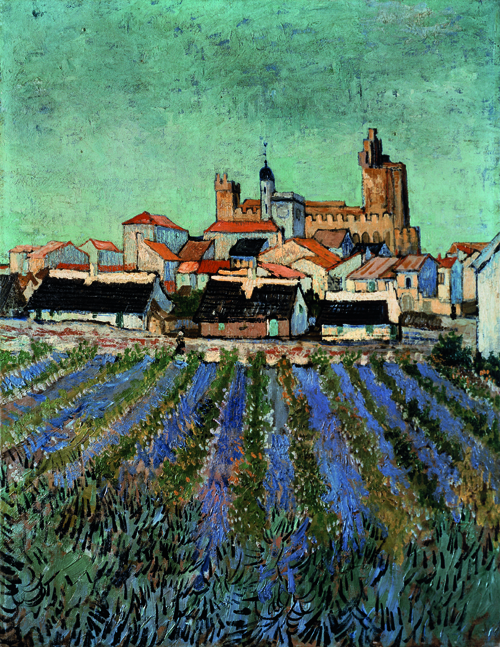
2. Eat one really killer omelette in France
The picturesque ancient abbey of Mont Saint-Michel, half Romanesque and half Gothic, perches perilously on a rocky islet jutting up from the salt flats on the border of France’s Normandy and Brittany. It was there, while on a motorcycle grand tour of Europe as an undergrad, that I made a double discovery. First, Romanesque architecture has a beauty that tugs at the heartstrings, but only if you see it up close and personal because in photos it comes across as squat and gloomy. Second, an art history prof urged me to have lunch at La Mère Poulard restaurant to sample its famously fluffy omelette.
Henry Adams’ classic 1905 book Mont Saint-Michel and Chartres, a study of the faith that built medieval cathedrals, is prefaced with a description of tourists “along the chaussée, over the sands or through the tide, till they stop at Madame Poulard’s famous hotel within the Gate of the Mount.” More than a century ago, the hotel’s restaurant was already renowned for the omelettes that would fortify pilgrims about to undertake the ascent up the medieval shoppe-lined spiralling Grande Rue to the abbey.
More than a century later, there I am, watching how the “floor show” beguiled the time for patrons waiting in queue: chefs in traditional red smocks and black hats rhythmically whisked the egg mixture, then poured it into great copper pans heating on a giant wood-burning fireplace. Or guests can ogle the walls covered with framed autographs from politicians and luminaries such as Ernest Hemingway, Charles de Gaulle, Cary Grant and Yves Saint Laurent.
I was welcomed to a typical lunch starting with Normandy bisque of Brittany lobster and ending with the regional specialty tarte tatin, an upside-down pastry of apples caramelized in butter and sugar—another apple foodie blessing from the land that birthed Calvados (cider brandy)—with vanilla ice cream and caramel. The main course, omelette with pan-fried foie gras and fresh mushrooms, was rich and filling enough to challenge the most gluttonous trencherman, yet paradoxically puffy as a soufflé and lighter than air.
So how do they do it? At home, I whisked eggs to the point of carpal tunnel syndrome without replicating La Mère Poulard’s delicacy. In his Blue Chef blog, New York’s French consulate sous chef reveals that the “famous recipe” includes three eggs per person, whites and yolks separated, whites beaten to form firm peaks and, when the yolks start to coagulate in the pan, one adds one tablespoon crème fraîche to two tablespoons of beaten whites to the middle of the pan. The finished product feels less viscous in the mouth than the usual recipe, he says. He admires “the difference of textures between the thick cooked layer of yolks and the light aerated warmed beaten whites.” Yes, but. Although the omelette recipe remains a secret, Salomé Clayton of La Mère Poulard allowed as to how their chefs do not separate the eggs. The mystery of La Mere Poulard’s omelette endures. —David Lasker
If you go www.france.fr. Air Canada offers year-round non-stop flights from Montreal to Lyon. www.aircanada.com
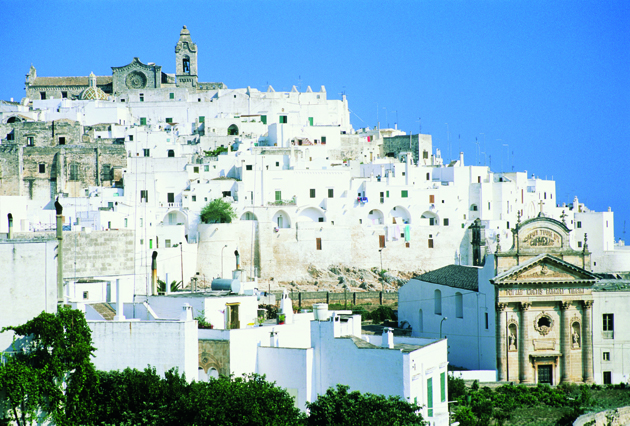
3. Take a working holiday in Italy
At dinner in the frescoed crypt of Jesce, a 14th-century fortified farmhouse located on the ancient Appian Way in Puglia, Italy, the local butcher serves a traditional clay pot of slow-oven-cooked sheep with local wild artichoke plant, chicory, fennel and basil potatoes.
Frescoes, foodies and Mama are the main ingredients in a working vacation—or, in this case, volunteering—in late May with Messors, a fresco-restoration workshop in the sun-drenched heel of the boot-shaped peninsula of Italy extending into the Mediterranean Sea. Jesce has been partially restored, thanks to the efforts of a thousand international Messors workshop participants over the past decade and a half. Its underground crypt typifies the melancholy mouldering caves that dot the rolling hills here. These womb-like Earth Mother sites have hosted impromptu chapels since early medieval times because they’re naturally air-conditioned. Insulated by thick bedrock, they maintain a constant 12 C to15 C year-round.
Tonio Creanza, our charismatic guide, instructor and archeologist, founded his workshops 25 years ago. Early one morning, he leads us down to a cave through clumps of tall golden grass. A few paint flecks enliven bare, featureless walls. Yet, with the same willful imagination that enabled heaven-gazing ancients to plot constellations of hunters and bears and bulls, Tonio points out the remaining traces of objects and outlines that identify specific saints that were depicted in Byzantine iconography—John the Baptist and Mary Magdalene.
At another site, we unload lights, light stands, cable and a power supply. We descend stone steps to a cave with better-preserved frescoes that include Franciscan saints and a crucifixion. Tonio explains his aim of stabilizing the frescoes by stopping water seepage, the frescoes’ greatest natural enemy. Egg-shaped holes in the figures are from another enemy, bandits who often smashed frescoes in the belief that they contained buried treasure. Tonio then demonstrates how to remove particles of mud and salt concretions near the fresco, painstakingly, one millimeter at a time, using a palette knife or a hammer and chisel. Emulating Tonio, I find that working with both arms lifted above my head for more than a minute is tiring. And this is no place for the squeamish, I realize, as light reflects off the slimy skins of giant slugs slithering inches away on floor, walls and ceiling. I begin to understand at least one part of the title of Irving Stone’s novel and 1965 Charlton Heston film about Michelangelo painting the Sistine Chapel frescoes, The Agony and the Ecstasy.
Giotto. Michelango. Me. In the afternoon, we learn about frescoes by creating them. In the art barn at Masseria La Selva, the sprawling limestone 18th-century hunting lodge, now a working farm, where we’re staying, Tonio lectures on the chemistry of calcium carbonate and fresco making. Then he demonstrates how to moisten a patch of plaster wall with the spray bottle, lay on fresh wet plaster with a trowel (yes, literally), mix pigment and water and brush on one colour at a time.
“Fresco” is Italian for “fresh.” Indeed, it’s more like watercolour than oil painting: you have to work quickly. When the mixture of quicklime, paint and water dries, the pigment bonds to the plaster; it will adhere to the wall for centuries. “We create art, but chemically and physically it’s limestone,” Tonio explains.
My own “mess-terpiece” is a stick figure of a Maritime pine on the lawn (I love their umbrella-like canopies). Our murals will endure the ages—until the next group plasters and paints over them. After all, if Michelangelo destroyed the Assumption, Nativity and Moses in the Bulrushes by Perugino and Pinturicchio in the Sistine Chapel to make way for his Last Judgment, I could hardly complain. The restoration work we did in the caves, however, just might endure. —David Lasker
If you go www.messors.com The Italy workshop lasts 10 days to three weeks ($1,500 to $3,000, plus airfare to Bari) and also includes culinary and shepherding workshops. Masseria bathrooms are small and communal. Pack clothes and shoes that can get dirty, soap, shampoo, conditioner and a face cloth, as well as a set of dinner clothes. There is no radio or TV in the rooms, and Wi-Fi is spotty. Be prepared for the physical: you will haul food, dinnerware, flowers and folding tables and chairs for the meals, taken, of course, al fresco.
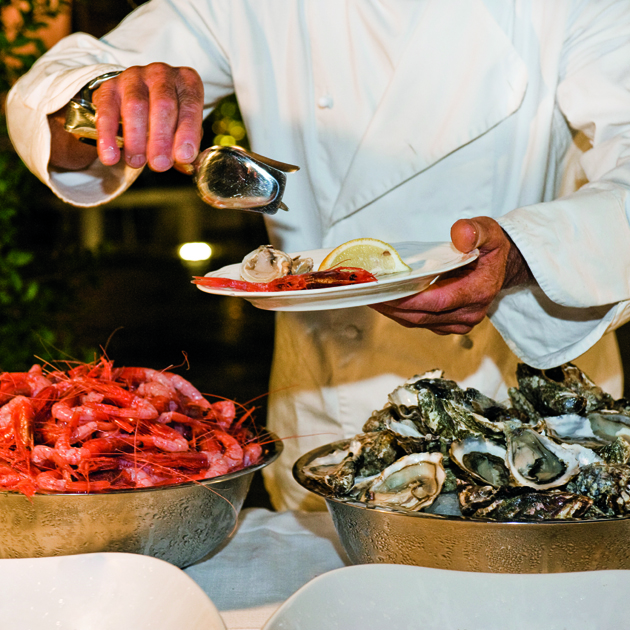
4. Eat like a local in Puglia
Every evening around 7 o’clock, the people of Puglia put on their glad rags and take a leisurely stroll through town. This ritual is known as la passeggiata and, here, on the heel of the boot of Italy, it’s as languid as the setting of the sun itself. It’s a time when everyone comes out to indulge in each other’s company as well as some local fare. Never mind it’s just before dinnertime, restaurant and café patios are packed with passersby who have stopped for a bite of antipasto and a glass of primitivo red wine; a basket of taralli (a pretzel-like snack) washed down with Birrozza craft beer; or a custard-filled pasticciotto with caffe in ghiaccio—iced coffee laced with almond milk. Even the steps of ancient churches are lined with gelato junkies and pizza buffs.
With fertile soil, climes ideal and a coastline along the Adriatic and Ionian Seas, the cuisine of Puglia reflects the bounty of land and sea. Think groves of olives and rows of olive oil, fields of durum wheat for pastas and breads. Think chickpeas and fava beans, artichokes and aubergine, broccoli rabe, peppers, zucchini and arguably the most succulent tomatoes on the planet. Think fish, fish, and more fish, particularly in seaside towns where everything from roasted octopus and swordfish rolls to grilled red tuna and plateau di frutti di mare crudi (raw seafood) jumps off the menus.
Do not think meat. Although, yes, you can get a steak here, historically Puglia has always been a poor region, and just because a bit of wealth has moved in doesn’t mean la cucina povera has moved out. “The people of Puglia are sticklers for tradition,” Robert Collins laughs. Collins, along with Lili Okuyama, owns Espressino Travel, a boutique tour company offering weeklong culinary-centric tours through the region from spring through autumn. The couple splits their residency between Vancouver in the winter and Lecce, a major city in the south of Puglia, in the summer.
Gianna Greco makes no apologies. “My region’s cuisine is simple and authentic like its people,” says the lifelong resident of Lecce. With roots that go far back, Greco owns Cooking Experience, a culinary school situated in one of the city’s historic palazzos. There, beneath a vaulted stone ceiling and surrounded by ancient stone walls, we learned how to make orecchiette (“little ears”) pasta from scratch, as well as traditional dishes such as ciceri e tria (chickpea sauce with half-boiled, half-fried pasta); parmigiana di melanzane (eggplant parmesan); finocchi gratinati (fennel gratin); and pesche al negroamaro (peaches in wine sauce). Greco conveyed regional rules such as never use garlic and onion in the same sauce or you’ll cover the sweetness of the tomato, and as importantly passion and pride.
And how, as Greco gushes, “The magic of our extra virgin olive oil transforms a simple plate of bread and tomatoes. Our bold wines accompany our days filling them with joy. And our pasta is formed with the hands of grandmothers that prepare it with great care and love.” But can you taste love? The people of Puglia think so. And, after wining and dining my way through their
region, I wouldn’t be surprised if one day, alongside sweet, sour, bitter et al, love is recognized as the sixth taste. —Rebecca Field Jager
If you go www.espressinotravel.com; 604-336-3080; [email protected]
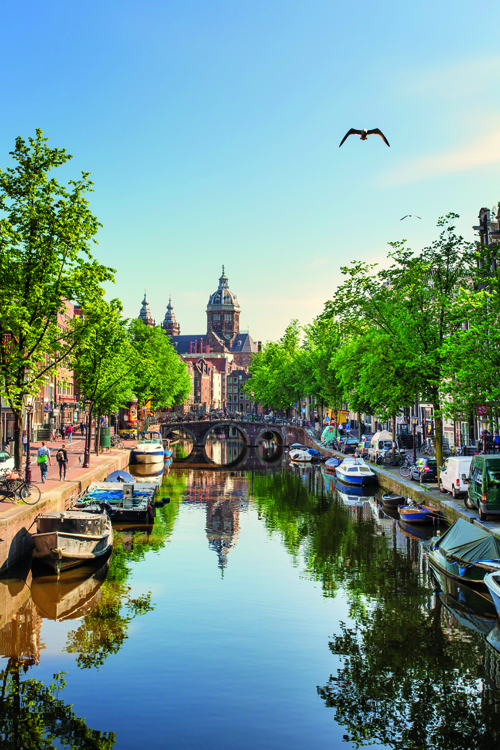
5. Two-wheel it in Holland
A recent barges-and-bikes tour of the Dutch countryside was about as tranquil and gentle a travel experience as I’ve ever had. Our barge, a converted herring boat called the Liza Marleen, glided for hours past impeccable gardens and shallow canals, past placid cows and baa-ing baby sheep looking for their mothers. We passed barnyard rooftop signs advertising Cheese and Clogs and we visited tiny, perfect villages with centuries-old leaning brick buildings that look like they were deliberately laid askew for the tourists to enjoy. At night we slept on a comfortable barge, which would be untied each morning and sent ahead to our next destination so we could do it again.
Our first day was something of a test run to check out our bikes, a 20-kilometre or so circuit through suburban North Amsterdam. We slowly pedalled past the main train station and took a quick ferry ride across the IJ River, where we were deposited in what felt like another world.
Many tourists only explore central Amsterdam and its famous canals and museums and, yes, the red light district. But they’re missing a peaceful and serene part of the city, where families cook on barbeques and dance to the radio outside their apartment buildings, and the smell of donairs cooking in small cafés fill the air. We passed leafy parks, community vegetable gardens and tidy, narrow homes with Instagram-perfect window boxes.
We cycled back to the boat tied at the dock near the main train station and slept on board. After breakfast, it was time for our first real day on the road.
Towns biked
Edam, of the cheese fame, with its tidy public square and sleepy canals; the pretty seaside town of Volendam, where we sat in the sun on the town’s boardwalk; Hoorn, with a gorgeous town square and a historic waterfront tower and a striking harbour. And make sure to get off your bike in Enkhuizen: you’ll find the fine Zuiderzee Museum here; an outdoor “living” museum where you can watch folks making rope or working up sweat in a baking-hot iron foundry. See what life was like when Enkhuizen was a key harbour town during the country’s Golden Age of exploration back in the 1600s, with the Dutch East India Trading Company, its shipyards and shipwrights.
Kilometres clocked
Some 50 kilometres on the first day; decent enough for a guy of a certain age who usually makes one or maybe two 20- to 25-kilometre rides a year. And Holland’s bike-centric culture helps keep you safe. People in cars expect to see cyclists, and they’re very understanding.
Fitness requirement
It’s doable for the average fit 50-something. Our bikes were sturdy and reliable, with 24 speeds and generous panniers to hold rain jackets and lunches. And remember to pack a proper pair of cycling shorts.
Cash output
This is an affordable (less than $200 a day per person, including all food and lodging, bikes and tours around various towns), fun, social and not terribly difficult trip where you can get up-close-and-personal with the people around you and local nature. And there’s nothing like a bike for both covering ground and being able to stop and enjoy the place at your own pace. —Jim Byers
IF YOU GO
The boat wasn’t fancy, but it was comfortable, and the food was good and plentiful. Rooms were small but with plenty of storage space. The common room was comfortable for sitting and reading or listening to music. Cycle Tours, Top of Amsterdam tour: www.cycletours.com; www.holland.com
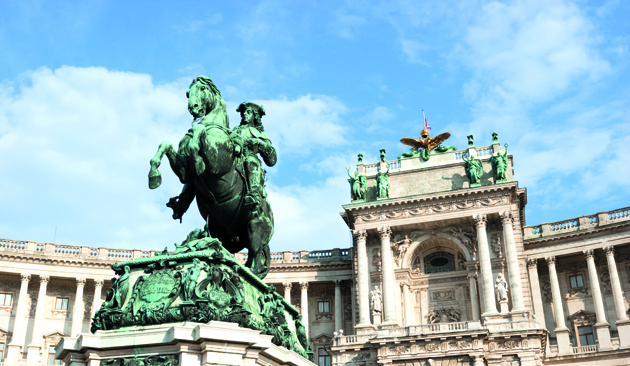
6. Take a city break in Vienna
Vienna is a masterpiece: in its art, its architecture and its culinary scene. The only city on earth that has a cuisine designation named after it, it is also the European heart of opera and classical music.
This year, the city is celebrating the 260th anniversary of Mozart’s birth. Mozarthaus, the museum that was once the composer’s home, is celebrating its 10th anniversary.
But this city does not just dwell on its well-cultured past. The MuseumsQuartier Wien (MQ) is where the modern straddles the Baroque. At the turn of the millennium, the royal stables on this site were re-envisioned into the MQ, where you will find the museum of the modern arts and contemporary and sometimes controversial exhibitions. It’s a cultural complex of almost as grand proportions as its neighbouring Maria-Theresien-Platz, the square directly across the Ringstrasse, or Ring Road, lined with some of the most historic and opulent buildings of the period. Speaking of which, it’s named for the Empress Maria Theresa, the last of the House of Habsburg and the most powerful and influential woman in Europe in the 1700s, whose 13 children included Marie Antoinette and two holy Roman Emperors, Leopold II and Joseph II. This now public park is home to the Natural History Museum, as well as the Art History Museum—where works from Klimt and Bruegel are on show. The stables for the Spanish Riding School—home of the famous white Lipizzaner horses – are a short stroll away, through the Hofburg Square.
And stroll, you should. Take in Maria Theresa’s Schönbrunn Palace—and where you can now spend the night! Live like an emperor or an empress for a price, of course, and have a pajama party in the Schönbrunn Palace Suite, a two-bedroom imperial hideaway. If a slumber party’s not your thing, after viewing the imperial apartments via public tour, take to the grounds of this royal summer retreat. It’s the site of what’s said to be the world’s oldest zoo, and the beautiful gardens here are just a preview to the variety of green spaces the city offers. Some 850 parks dot the landscape. It’s no wonder Vienna has consistently ranked as the best place to live on the planet.
Do: Afternoon like a local
After the opulence, take in Vienna’s lively, down-to-earth street vibe.
Have a I’ve-hit-the-3-p.m.-wall snack
1. Take a stroll to the local sausage stand (Würstelstand).
2. Choose your flavor—everything from hot dogs to Käsekrainer (spicy pork and cheese) and bratwurst, with mustard and a slice of hardy rye bread.
3. Order it with a cold beer on the side for good measure.
4. Eat standing up, bite, sip, people watch, repeat. Tip: Two of our favourites are Bitzinger Wurstelstand, near the Albertina Museum and the Hot Dog stand (look for the neon sign) near St. Stephen’s Square across from Aida Bakery, a great people-watching spot.
Eat more pastries
Have a slice of Sachertorte from the kitchens where it was created at the Sacher Hotel. And did we mention the hot apple strudel? This Austro-Hungarian delicacy is one of the reasons Vienna is on every sweet tooth’s list
Try the house vintage
You don’t have to leave the city to take in a vineyard. Book an evening at a traditional Heuriger, Vienna’s answer to the local pub. The house wines tend to run toward Grüner Vetliner, so if you fancy a fairly newish white and a bit of revellry, local musicians included, this is the place. www.wien.info/en
Stay: At an award-winning hideaway
Located within walking distance of the Museum Quarter and Maria-Theresien-Platz, Hotel Altstadt Vienna is celebrating its 25th birthday and the 2016 Tripadvisor Travelers’ Choice Awards as the Best Hotel in Austria. The revamped reception area in this historic building has a living green wall, while rooms are a mashup of Baroque and Modernist with contemporary Eastern touches. Public and private spaces are a veritable gallery, a master’s row of the art world, with the likes of Warhol to Leibowitz to Prachensky displayed.
IF YOU GO
A good time would be next May, when the city hosts Life Ball, the largest benefit in Europe to support HIV/AIDS, and resplendent LGBT visitors. Book now for the art and the artful rooms and, of course, for the party. www.altstadt.at/en
A version of this article appeared in the September 2016 issue with the headline, “Continental Shift,” p. 56-65.
